Articles
- Page Path
- HOME > J Korean Powder Metall Inst > Volume 21(2); 2014 > Article
-
ARTICLE
- Spark Plasma Sintering of Stainless Steel Powders Fabricated by High Energy Ball Milling
- Si Young Changa,*, Sung-Tag Ohb, Myung-Jin Sukc, Chan Seok Hong
-
Journal of Korean Powder Metallurgy Institute 2014;21(2):97-101.
DOI: https://doi.org/10.4150/KPMI.2014.21.2.97
Published online: March 31, 2014
- *Corresponding Author : Si Young Chang, TEL: +82-2-300-0168, FAX: +82-2-3158-3770, E-mail: sychang@kau.ac.kr
• Received: March 12, 2014 • Revised: April 11, 2014 • Accepted: April 13, 2014
© Korean Powder Metallurgy Institute
- 887 Views
- 8 Download
- 1 Crossref
Abstract
- The 304 stainless steel powders were prepared by high energy ball milling and subsequently sintered by spark plasma sintering, and the microstructural characteristics and micro-hardness were investigated. The initial size of the irregular shaped 304 stainless steel powders was approximately 42 μm. After high energy ball milling at 800 rpm for 5h, the powders became spherical with a size of approximately 2 μm, and without formation of reaction compounds. From TEM analysis, it was confirmed that the as-milled powders consisted of the aggregates of the nano-sized particles. As the sintering temperature increased from 1073K to 1573K, the relative density and micro-hardness of sintered sample increased. The sample sintered at 1573K showed the highest relative density of approximately 95% and a micro-hardness of 550 Hv.
- Stainless steels have been widely used in all industrial fields including household articles because of the excellent corrosion resistance, and usually provided through smelting and rolling, and so on. On the other hand, stainless steel powders have recently received much attention because there is a great demand for the structural and functional sintered components. Such components have been fabricated by powder metallurgy that gives high ability producing the near net-shaped components. Among the powder metallurgy methods, the high energy ball milling is a process of mechanical alloying (MA) that is possible to manufacture amorphous phase or nanocrystalline structure in inorganic materials synthesis at room temperature with a very simple device so that it has been an active study [1]. It consists of repeated events of energy transfer, promoted by the milling device, from the milling tools (generally balls) to the milled powder. In general, the nano-sized powders obtained by high energy ball milling are rapidly ripened during conventional sintering because they are exposed to high temperature for a long time. Therefore, it is important to restrain the ripening during sintering for the nano-sized bulk materials. Recently, a spark-plasma-sintering (SPS) technology has attracted a lot of researchers’ attention because of the merits of rapid heating rate, short holding time, high sintering density, small grain size and easy manipulation compared to other conventional sintering methods [2, 3]. In SPS method, starting powder materials are subjected to pressure in uniaxial direction, and are sintered by Joule heat and the effect of spark plasma generated in the gap between powder materials. The SPS has been applied for new materials, such as fine ceramics [4, 5], nano phase materials [6], hard alloy tool materials [7], magnetic materials [8] and so on, but few of ferrous materials have been reported.
- In this work, therefore, the commercial 304 stainless steel powders were fabricated by high energy ball milling and directly sintered by SPS to form bulk stainless steel, and the microstructural characteristics of as-milled and as-sintered stainless steel powders were investigated.
Introduction
- The commercial 304 stainless steel (Fe-18Cr-8Ni) powders were ball-milled under a high purity argon atmosphere using zirconia balls in the self made high energy ball mill. The ball to powder weight ratio was 20:1 and the milling was conducted at 800 rpm for 5h. The powders were collected in the glove box filled with argon gas. The spark plasma sintering was performed at 1073~1573K for 3h with graphite mold under 45 MPa in the applied pressure. Fig. 1 shows the typical sintered body obtained by spark plasma sintering.
- The microstructural characteristics of the powders and sintered samples were observed by a scanning electron microscope (SEM) and a transmission electron microscopy (TEM). The powder size and shape factor were investigated by an image analysis. The composition of powders was analyzed by an energy dispersive spectroscope (EDS), and the phase and structure changes in the powders were analyzed by an Xray diffractometer (XRD). The relative density of sintered samples was obtained by Archimedes method. Micro-hardness was measured by a Vickers micro-hardness tester under a load of 500 g for 15 sec.
Experimental Procedure
- The typical SEM photographs of as-received and as-milled stainless steel powders are shown in Fig. 2. The initial stainless steel powders were irregular shape, whereas the shape was changed to be spherical after milling. The size, shape factor and size distribution obtained from Fig. 2 are quantitatively shown in Fig. 3. The asreceived stainless steel powders had the mean size of approximately 42 μm. After ball-milling at 800 rpm for 5h, a mean size was reduced to approximately 2 μm and the shape factor of as-received powders which was 0.6 increased to approximately 0.7, indicating that the powders were almost sphere. The size distribution of asreceived powders was inbetween 8 and 70 μm, and asmilled powders showed 0.5~5 μm in size distribution. The highest number peaks of as-received and as-milled powders corresponded to their average size.
- Fig. 4 and Fig. 5 show the EDS and XRD analyses of stainless steel powders, respectively. It was analyzed that the as-received and as-milled powders contained only Cr, Ni, Cu and Fe3C phases, which indicated that there was no formation of impurities and new phases due to collisions between balls during milling. As seen from the XRD pattern, the intensities of main diffraction peaks decreased and disappeared after milling at 800 rpm for 5h. Meanwhile, the peaks became broader, indicating a decrease in the particle size of powders and the formation of metastable structure. It is generally known that the differential broadening of XRD peaks is often observed in metastable materials due to large amounts of strain [9].
- Fig. 6 shows typical TEM photograph of as-milled powder. The as-milled powder consisted of particles. The mean size of particles was approximately 13 nm. Accordingly, it was apparent that the as-milled powders shown in Fig. 2 were agglomerated with nano-sized particles. The size of particles obtained by TEM images was compared with that calculated by Scherrer formula based on XRD pattern as shown in Fig. 7. The calculated size was approximately 7 nm, which relatively well corresponds to the size obtained from TEM images.
- Fig. 8 shows SEM images of as-milled stainless steel powder samples sintered by spark plasma sintering method at 1073~1573K. As the sintering temperature increased up to 1473K, there was no apparent change in not only the size of agglomerated powders but the microstructure with many open pores, indicating that sufficient substance migration including diffusion had not occurred during sintering. At 1573K, however, the sintered samples showed dense microstructure including the inter/intra-granular pores.
- The change of relative density in the sintered samples with increasing sintering temperature is shown in Fig. 9. As the sintering temperature increased, the relative density increased. In particular, the sample sintered at 1573K showing dense microstructure had the highest relative density of approximately 95%, whereas that of samples sintered at lower temperatures than 1573K was lower than approximately 85%, which results from large open pores as shown in Fig. 8.
- The micro-hardness of the sintered samples is plotted in Fig. 10. The micro-hardness markedly increased with increasing sintering temperature, which can be explained based on the change of relative density with temperature shown in Fig. 8 rather than the size change of agglomerated powders. In general, the commercial 304 stainless steel by conventional processing has approximately 200 Hv in micro-hardness [10]. In this study, however, the sample sintered at 1573K had much higher micro-hardness of more than 550 Hv. This is considered to be due to the much finer grains in the sintered sample.
Results and Discussion
- The commercial 304 stainless steel powders were milled by high energy ball milling at 800 rpm for 5h. The powders were changed from an irregular shape to a spherical shape after milling. As-milled powders that were the aggregates consisting of the nano-sized particles had approximately 2 μm in mean size, and the size distribution was inbetween 0.5 and 5 μm. Based on the EDS and XRD results, there was no formation of reaction compounds during high energy ball milling. As-milled powders were subsequently subjected to spark plasma sintering at 1073~1573K for 3h with 130 MPa. The relative density increased with increasing sintering temperature and the highest relative density of approximately 95% was obtained at 1573K. The micro-hardness also increased with increasing sintering temperature, and the sample sintered at 1573K showed the highest micro-hardness of approximately 550 Hv.
Conclusions
-
Acknowledgements
- This work was supported by a grant No.C2009-0089508 from National Research Foundation of Korea funded by the Ministry of Education, Science and Technology, Republic of Korea
Acknowledgements
Fig. 3.Mean powder size and shape factor and (b) size distribution curves of as-received and as-milled stainless steel powders.
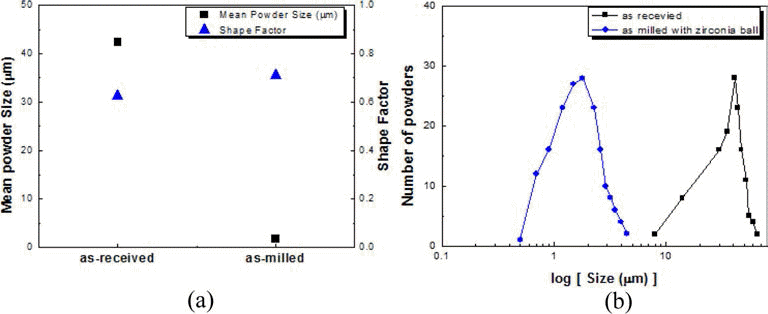

- 1. J. S Benjamin, Metall. Trans. (1970) 1 2943.ArticlePDF
- 2. L Gao and H Miyamoto, J. Inorg. Mater. (1997) 12 129.
- 3. M Tokita, J. Soc. Powder Technol. Japan. (1993) 30 790.Article
- 4. T Takeuchi, M Tabuchi, H Kageyama and Y Suyama, J. Am. Ceram. Soc. (1999) 82 939.Article
- 5. Z. J Shen, M Johnsson, Z Zhao and M Nygren, J. Am. Ceram. Soc. (2002) 85 1921.Article
- 6. G. D Zhan, J. D Kuntz, J. L Wan and A. K Mukherjee, Nat. Mat. (2003) 2 38.ArticlePDF
- 7. S. I Cha, S. H Hong and B. K Kim, Mater. Sci. Eng. A. (2003) 351 31.Article
- 8. M Yue, J. X Zhang, Y. F Xiao, G. P Wang and T Li, IEEE Trans. Magn. (2003) 39 3551.Article
- 9. L Diandra, Leslie-Pelecky and E. M Kirkpatrick, Nano-Structured Material. (1999) 12 887.
- 10. Japan Institute of MetalsFerrous Materials. (1988) Sendai 167.
REFERENCES
Figure & Data
References
Citations
Citations to this article as recorded by 

- Investigating molybdenum’s sulphur scavenging ability for MoS2 formation in preventing pitting corrosion of stainless steels
Kai Xiang Kuah, Daniel J. Blackwood
npj Materials Degradation.2023;[Epub] CrossRef
Spark Plasma Sintering of Stainless Steel Powders Fabricated by High Energy Ball Milling
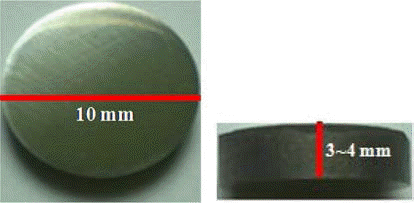



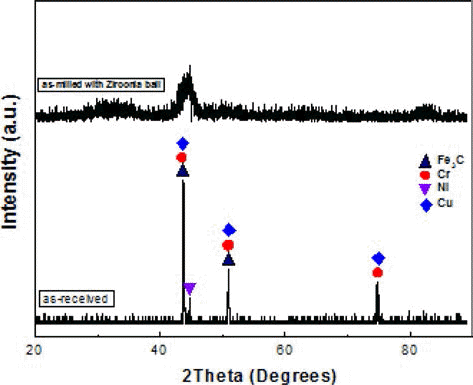
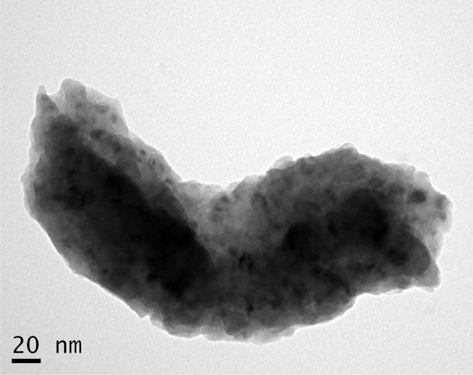
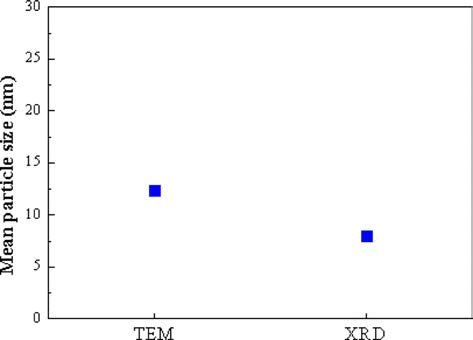

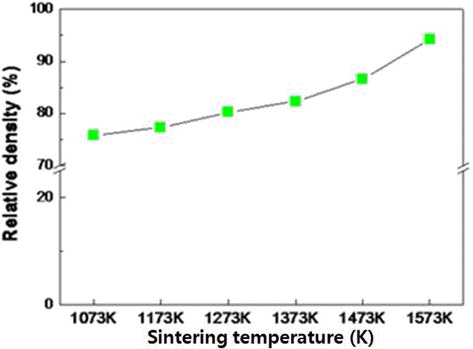

Fig. 1.
External appearance of sample obtained by spark plasma sintering.
Fig. 2.
SEM images of (a) as-received and (b) as-milled stainless steel powders.
Fig. 3.
Mean powder size and shape factor and (b) size distribution curves of as-received and as-milled stainless steel powders.
Fig. 4.
EDS analysis of as-milled stainless steel powders.
Fig. 5.
XRD pattern of as-received and as-milled stainless steel powders.
Fig. 6.
TEM image showing an aggregate of particles after milling.
Fig. 7.
Mean particles size of as-milled stainless steel particles.
Fig. 8.
SEM images of as-milled stainless steel powders after spark plasma sintering (SPS).
Fig. 9.
Relative density of as-SPSed stainless steel powders.
Fig. 10.
Micro-hardness of as-SPSed stainless steel powders.
Fig. 1.
Fig. 2.
Fig. 3.
Fig. 4.
Fig. 5.
Fig. 6.
Fig. 7.
Fig. 8.
Fig. 9.
Fig. 10.
Spark Plasma Sintering of Stainless Steel Powders Fabricated by High Energy Ball Milling
TOP
 KPMI
KPMI


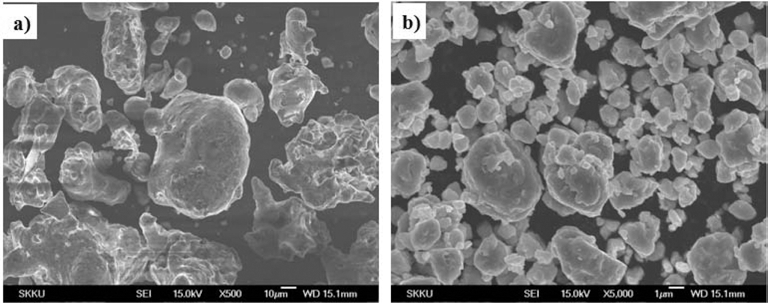






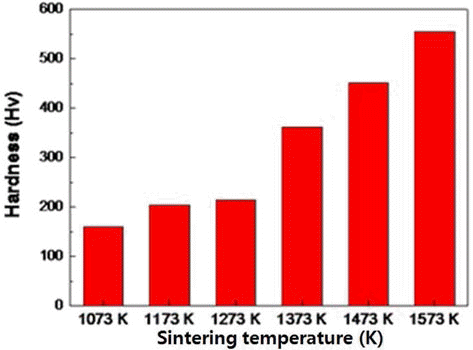
 Cite this Article
Cite this Article










